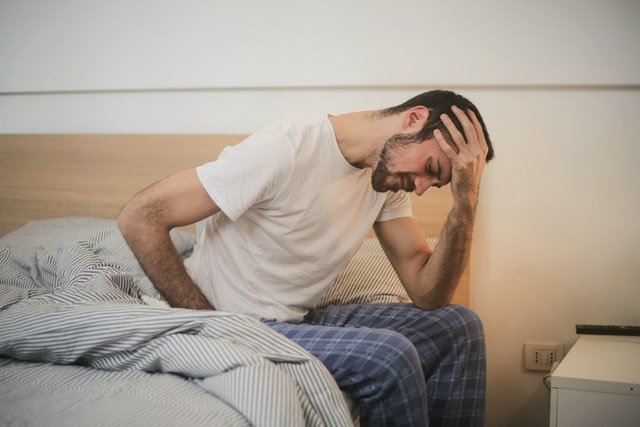Have a question?
New York Locations
Book Now
Have a question?
Book an appointment
4 New York Locations
Menu
Have a question?
New York Locations
You’re probably aware that Botox injections are a popular wrinkle treatment. Many people in New York (NY), and around the globe, turn to this famous therapy to achieve a more youthful appearance. But did you know that Botox injections can also be used to treat certain health conditions? Discover all you have to know on Botox injections in NY just below!
This familiar care eases the signs of aging. However, many physicians like Doctor Roya, also use Botox treatments in NY to improve one’s health and well-being. In fact, the American Academy of Neurology recommends the injection of Botox for a variety of non-cosmetic conditions. To better understand both the cosmetic and health benefits of a Botox treatment, we’ll begin by reviewing the fundamentals of Botox.
Botox is a botulinum toxin. Occurring naturally in the environment, it is produced by the bacterium Clostridium botulinum. It is found in soil, water and on plants. Clostridium botulinum is a neurotoxin. Neurotoxins block nerve impulses. The FDA first approved the cosmetic use of Botox in 2002 to treat forehead wrinkles – those taking place between the eyebrows.
Botox is a protein that, when injected in small doses, relaxes muscle activity. That’s why it’s commonly used to temporarily reduce the appearance of wrinkles. When Botox is injected into a muscle, it blocks the nerve signals that tell muscles to contract. The result is weakened or paralyzed muscles and the lessening of visible skin creases.
The best Botox candidates are healthy adults without a history of neuromuscular disease (for example, multiple sclerosis or myasthenia gravis). Contact Doctor Roya Jafari-Hassad to determine your suitability for Botox treatments.
Understanding the reasons skin wrinkles with age and the types of Botox injections that best address anti-aging treatments helps to perceive an individual’s suitability for Botox. Knowing what to expect before committing to receive Botox injections can lead you to ask the appropriate questions during your pre-treatment consultation.
Dermato-Endocrinology notes in a recent study, with age, the dermis, or the middle layer of the skin, thins. Elasticity loosens. Through the aging process, the skin’s ability to heal slows. Its retention of moisture and oil secretion lessen. Together, all of these factors become evident on the skin’s surface layer as creases, wrinkles or depressions – all visible on the skin.
Medical professionals often treat the skin’s age-related symptoms with Botox injections. Most individuals seeking Botox injections already know which areas they want to correct.
Expression lines, creases or wrinkles on the face and neck result from a variety of causes. Stress, laughing, frowning, regular sleep positions, erratic sleep patterns, smoking, weight loss, sun damage and other daily life occurrences contribute to wrinkles.
Botox injections temporarily smooth the appearance of your skin by relaxing underlying muscles. When a medical professional injects Botox into muscles that contract and cause wrinkles, the skin becomes smoother. This can help reduce the look of smiling crow’s feet, expression lines and sinking frown lines.
A patient can expect a 10-to-15-minute Botox in-office procedure. While after-injection results become visible 10 to 15 days following an application. There is also no ‘downtime’ following a typical Botox injection; patients are free to resume their normal, daily routine post-procedure.
However, over time, muscles will become active beneath the skin. This internal movement will begin to make wrinkles more visible on the skin’s surface. The beneficial effects of Botox typically last about three to four months.
Touch-ups, or repeat injections, are usually needed as the effects of Botox diminish and muscle activity in the injected area returns. Typically, ongoing Botox injections are required every few months. Contact Doctor Roya to discuss the importance of setting a schedule of injections to maintain a creaseless or minimized look of wrinkles. Often the age and depth of wrinkles when first beginning a Botox regiment determine an injection schedule.)àp
Botox injections for health and well-being successfully target a variety of medical conditions. Many patients report positive results after injections for a lot of symptomatic conditions.
Migraine headaches cause frequent severe pain, throbbing, and sensitivity to light and sound. Adults experiencing daily chronic migraine for four or more hours, 15 days or more each month may find relief from Botox. Preventative treatments like Botox can alleviate migraine before they begin. A consultation with Doctor Roya to confirm a suspicion of chronic migraine is the first step toward an effective course of action.


A urinary urge, or feeling, characterizes OAB, or an overactive bladder. Often the sensation is sudden and occurs throughout the course of a day. While the cause is unclear, the medical community seems to agree that contractions of muscles in the abdomen may be at the root of the condition.
On the other hand, urinary incontinence is the repeated and uncontrolled leaking of urine from the bladder, ranging from small to large amounts. Women tend to be more affected by urinary incontinence than men. The condition is often more prevalent in adults as they age.
Men frequently experience UI after prostate surgery. ‘Stress incontinence’ can occur in younger women during pregnancy or post-childbirth due to muscle weakness. Physical activity, laughing or sneezing can all trigger an episode of UI. This type of urinary incontinence is the most common form of the condition.
According to JAMA – the Journal of the American Medical Association, 75% to 100% of women in a four-month study who experienced urinary incontinence had reduced incidences of symptoms after being treated with Botox injections. A consultation with Doctor Roya will help determine if Botox is appropriate for your condition.

Hyperhidrosis, or excessive sweating, is another condition that benefits from Botox treatments. The botulinum toxin injection blocks the release of a chemical that signals sweat glands to produce sweat. This can be an effective treatment for people who perspire excessively from their underarms, palms, or soles of their feet.
Parkinson’s Disease is a nervous system disorder. It is a progressive condition that affects an individual’s mobility. Tremors and a stiffening of the muscles are typical symptoms of PD. However, these symptoms can be eased with the use of Botox. In fact, Botox can reduce the severity of muscle spasms.
Often patients with PD experience difficulty swallowing. This manifestation can lead to drooling. To decrease saliva production, and thus the occurrence of drooling, some physicians recommend their patients consider receiving Botox injections in the salivary glands.
Cervical Dystonia, or spasmodic torticollis, is a condition that primarily affects middle-aged women. However, men and younger individuals can experience the painful condition. The condition causes involuntary contractions in the neck muscles, neck twisting and directional pulling from side-to-side, forward, or backward. The intense pain can limit head and neck movement. Botox injections block the nerves’ ability to send messages to contract a patient’s neck muscles – temporarily halting the spasms.

Blepharospasm is a condition characterized by uncontrolled eye muscle contractions. People with the diagnosis experience excessive blinking and eye irritation. The condition can lead to dry eyes which prevent, or slows down, the eye’s production of tears. Botox injections can improve excessive blinking and irritation by weakening the muscles that cause the spasms.
Strabismus, commonly referred to as ‘cross-eyed’, is characterized by an abnormal alignment of the eyes due to paralyzation of at least one eye muscle. A Botox injection into the affected eye muscle helps improve the condition for up to four months. Both children and adults have experienced temporary correction of strabismus following Botox injections.
For the most part, Botox injections are not painful. You may feel a tiny pinprick or nothing at all. The needle used for Botox is very thin. Discomfort is usually minimal and brief. If you’re concerned about pain, ask your doctor to use a topical anesthetic cream prior to treatment. This will numb the area and will lessen the intensity.
Many people do not experience any side effects following their Botox injections. However, those who do, report pain, swelling, bleeding, or bruising at the injection site. Others experience headaches, flu-like symptoms, or eyelid drooping.
More serious side effects are rare but can include swallowing or breathing problems. Patients diagnosed with ALS, Lambert-Eaton syndrome or myasthenia gravis may be at greater risk of experiencing side effects. Should these side effects occur, they typically last a few days and go away on their own.
There are a variety of products on the market to diminish the look of wrinkles. Doctor Roya encourages consultations to determine which procedure is most appropriate for you. Often, procedures can be combined for optimum effectiveness. Some of the other options include:
Thank you for reviewing the preceding information about Botox treatments. Doctor Roya’s passion and commitment to science as it relates to health, beauty and wellness have helped to establish her incomparable reputation. Please contact Doctor Roya to discuss how Botox treatments may be beneficial for you. Schedule a consultation at one of her three convenient New York locations in Manhattan, Long Island or Queens.
12 Bond St, Unit C2 Great Neck NY 11021
895 Park Ave, Suite 1 B, New York, NY 10075
41-02 75th Street First floor Elmhurst, NY 11373
109 East 36th Street, NY 10016